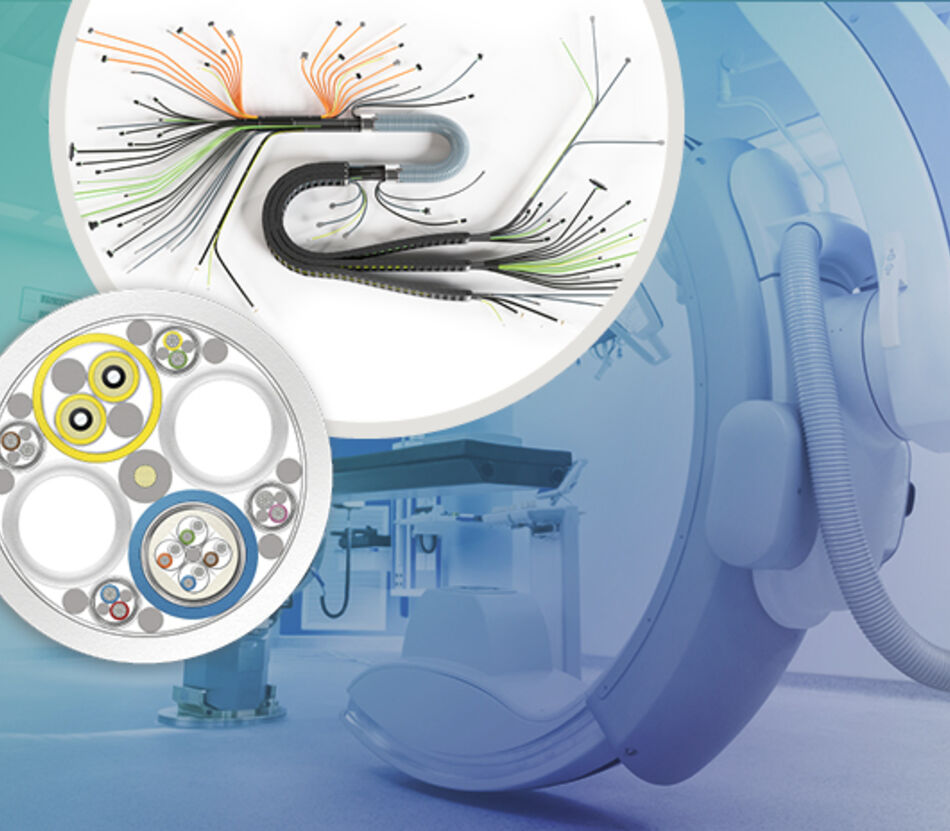Challenge / Problem Description: A leading medical device manufacturer was facing significant challenges with the internal wiring of its new X-ray machine for the North American healthcare market. The compact design of the X-ray device required a cable harness that could handle multiple functions, including power distribution, data transmission, control of operation, and signal integrity, while also accommodating the device's extended movement and complex positioning requirements. Additionally, the high electromagnetic fields generated by the X-ray system posed a risk of interference, potentially compromising image quality and system reliability.
Method: BizLink was tasked with designing a custom internal cable harness that fit within the X-ray machine's tight confines and supported its dynamic range of motion. The engineering team worked closely with the customer to model the cable system layout, ensuring precise fit and function while accommodating the device's articulation, rotation, and extension capabilities. Shielding techniques were incorporated to minimize electromagnetic interference (EMI), and high-flexibility cables were selected to withstand the device's repetitive motions without experiencing fatigue or breakage.
Obstacles: One major obstacle was managing the heat dissipation within the compact enclosure, as the dense cable bundling risked overheating and compromising the cable's performance and reliability. BizLink's engineering team adjusted the harness design and integrated customized cables with smaller outer diameter to optimize airflow and reduce heat buildup, ensuring the cable harness could withstand the thermal stresses associated with prolonged use.
Also, a massive cable bundle feed-through next to a load-bearing joint requested further attention. It was to be guided at a 90° angle inside the unit directly after feed-through and then split into individual strands to support radiation and detector unit. Orbital movement and total minimum dimension targets added even more stress to the connections in this section.
BizLink’s engineers suggested integrating a hybrid cable solution as well as injection-molded brackets to minimize space need, friction, and mechanical stress, and thereby increase total system reliability.
Cable Solution and Actions: BizLink’s cable solution involved the use of several multi-conductor cables, some of them with double shielding (foil and braid) to combat EMI, or specially designed to withstand frequent bending, torsion, and tensile strength. The cable elements and other components all complied with different UL-AWM-Styles to enable UL wiring harness approval for the customer. Additionally, the custom cables implemented significantly reduced the overall footprint of the cable harness, allowing for a more compact and efficient layout.
The total cable solution was tailored to suit the X-ray device's functions, dimensions, and motion. The optimized design was approved by system verification tests, and the customer gave approval for series production.
Results: The redesigned cable harness was successfully integrated into the X-ray device, providing reliable and lasting connectivity without EMI issues. This led to improved image quality, reduced downtime due to cable-related failures, and a faster time-to-market for the manufacturer. The cable harness also enabled the X-ray device to achieve its extended movement and positioning requirements, enhancing its versatility and usability in various medical applications.
Key Lesson Learned: Integrating cable layout and management considerations in the early stages of harness development, especially for compact, high-performance medical devices, supports development goals such as long motion time, reliable operation, and compact device design. By carefully considering the thermal and dynamic environment and selecting appropriate materials and design techniques, BizLink was able to deliver a cable harness solution that met the stringent requirements of the medical X-ray device.

